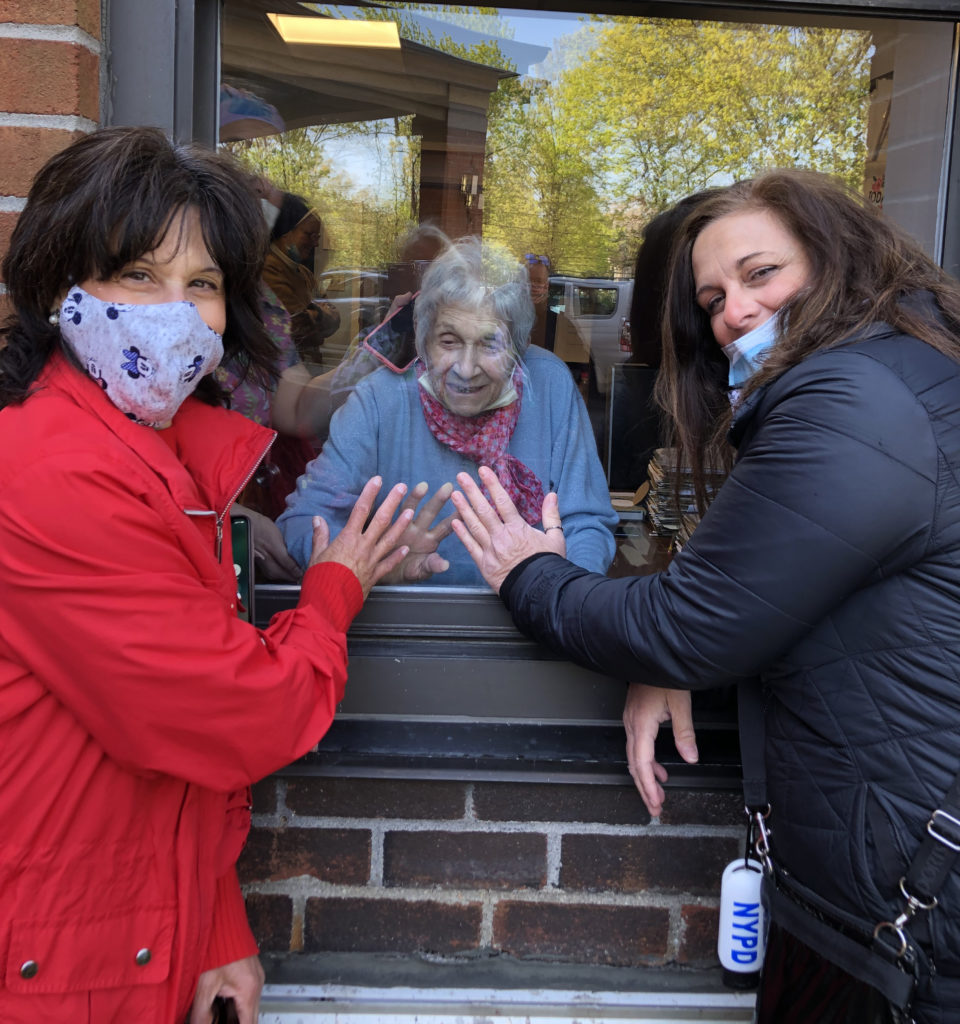ABOVE: Fr. Richard Gill, pastor of St. Lawrence O’Toole Parish in Brewster, takes the Eucharist on the road.
For New York Catholics, it has been a year like no other. We who are called to join in the Mystical Body of Christ, to worship as a community and give care and sustenance to our neighbors, were given a new duty: to keep our distance. With the virus among us, proximity became peril.
For now, the worst seems past. Indoor public Masses are back – with masks, social distancing and other restrictions. In the meantime, the parishes, agencies, offices and leaders of the archdiocese have found some new ways to spread the message and the mercy of Christ.
No one knows whether the next few months will bring further reopening or a second wave of Covid-19. Either way, it seems certain that many of these new ideas will endure even in the post-pandemic world.
MASSES AND SACRAMENTS
Televised and livestreamed Mass from St. Patrick’s Cathedral and various other parishes existed before the pandemic, but during the shutdown it became the way to attend. While not a full-on substitute for the in-person Mass, it allows Catholics to experience the service when it is not safe to gather indoors – and remains a lifeline for many who are high-risk.
Not all solutions were virtual, and some were centuries old. The Act of Spiritual Communion, a prayer to be said when a Catholic is unable to receive Communion in person, was not invented during this crisis, but it was unfamiliar to many. Though not a substitute for the actual sacrament, it was a godsend for a population suddenly cut off from the physical host.
It’s also not new to have Mass outdoors when churches are off limits. Centuries ago, priests and parishioners gathered secretly for Mass in the Irish countryside when English law made it a crime to practice the Catholic faith. This spring, there was no need to hide in the fields, but indoor gatherings were prohibited. Solution: the parking lot Mass, with each family keeping to its own car and the celebrants’ voices carried over car radios.

The use of our motor vehicles was also central to two other innovations: the drive-through confession (the one sacrament that everyday parishioners could receive in the early weeks of the crisis) and the mobile Eucharistic adoration, in which pastors transported the monstrance on the back of a truck in a slow procession through neighborhoods where the faithful lined the sidewalks to pray and witness the gift of Christ’s sacrifice. In other parishes, the monstrance was placed in a window so that adoration could take place safely from outside.



CLOCKWISE FROM ABOVE LEFT: A family visit at ArchCare’s Carmel Richmond Nursing Home, Staten Island; a van full of food ready to roll at Catholic Charities of Orange, Sullivan and Ulster; business as unusual in St. Lawrence O’Toole’s food pantry, Brewster.
CORPORAL MERCY
While Mass and the Eucharist are at the core of Catholic life, the work of the Church in the community is far-reaching and critical for the many who are hurting, hungry or homeless. When the pandemic hit the tri-state area in March, organizations like Catholic Charities of the Archdiocese of New York and ArchCare, the health- and senior-care ministry of the archdiocese, swiftly switched gears to protect the health of staff, volunteers and clientele while also ensuring that services would continue. Local parishes kicked in as well, retooling their food pantries and other outreach efforts.
For Catholic Charities – whose programs address a wide spectrum of needs including poverty, hunger, homelessness, underemployment, addiction, and immigration and mental health issues – the challenge was to find safe ways to deliver services even as the needs were growing.
Not all services could be made safe through the use of technology. Pantries and other services switched to an outdoor distribution model where food and other necessities were delivered to clients’ homes or set out for pickup on sidewalk tables. At homeless shelters and residences for the developmentally disabled, workers continued to assist residents in person, but with added precautions. “Sites are staffed and sanitized,” says Msgr. Kevin Sullivan, Catholic Charities’ executive director. “Meals are provided, and social service workers coordinate care on behalf of the residents.” The most significant change has been the impact of social distancing at meals and in support group programs.
At the nursing homes, eldercare programs and specialized medical centers run by ArchCare, the challenges were similar. When necessary, staff from the PACE senior centers made house calls to care for clients. ArchCare’s nursing homes and medical centers became frontline facilities in the fight against Covid-19. In some cases, chaplains went into isolation for the duration. Family visits were conducted through windows or via tablets and smartphones.
Our churches have now reopened for Sunday Mass – but in reality, the Church never closes. Yes, the pews were empty for several weeks, but the faithful were present in spirit (and in attendance online). They prayed and grieved for those who were suffering, said a special intention for families and loved ones, then got to work. The Mystical Body of Christ carried on. ![]()
